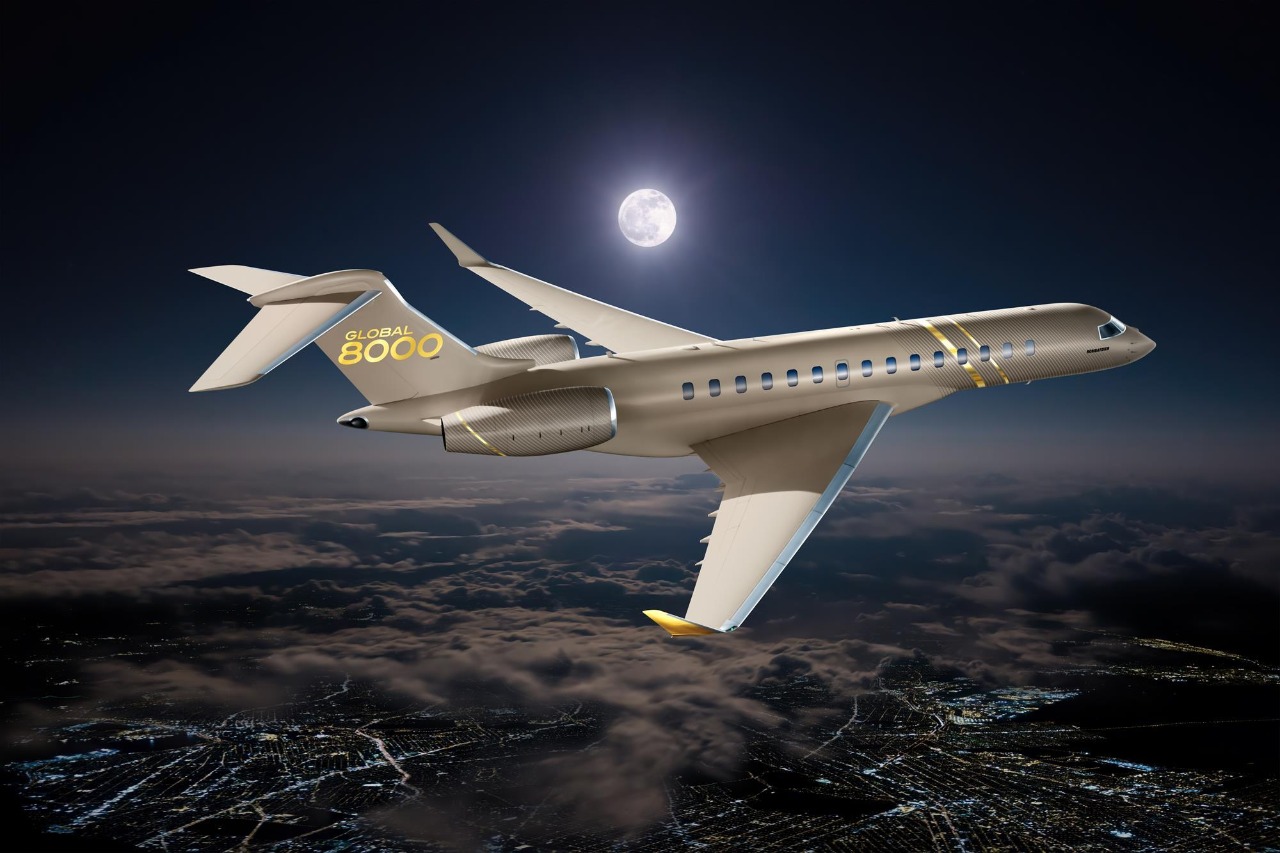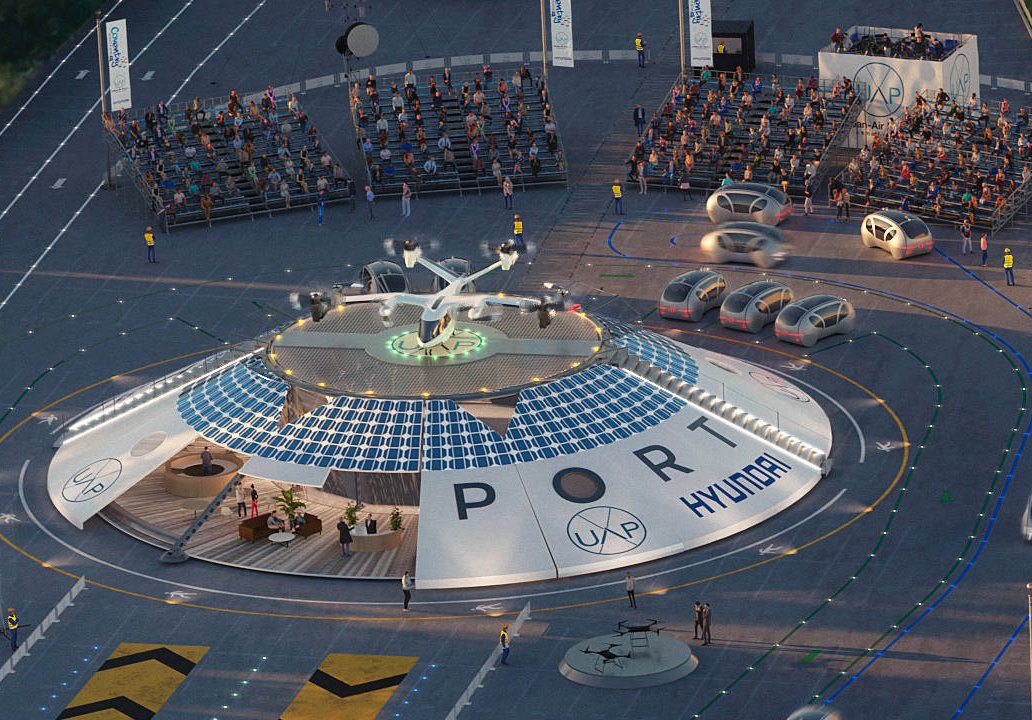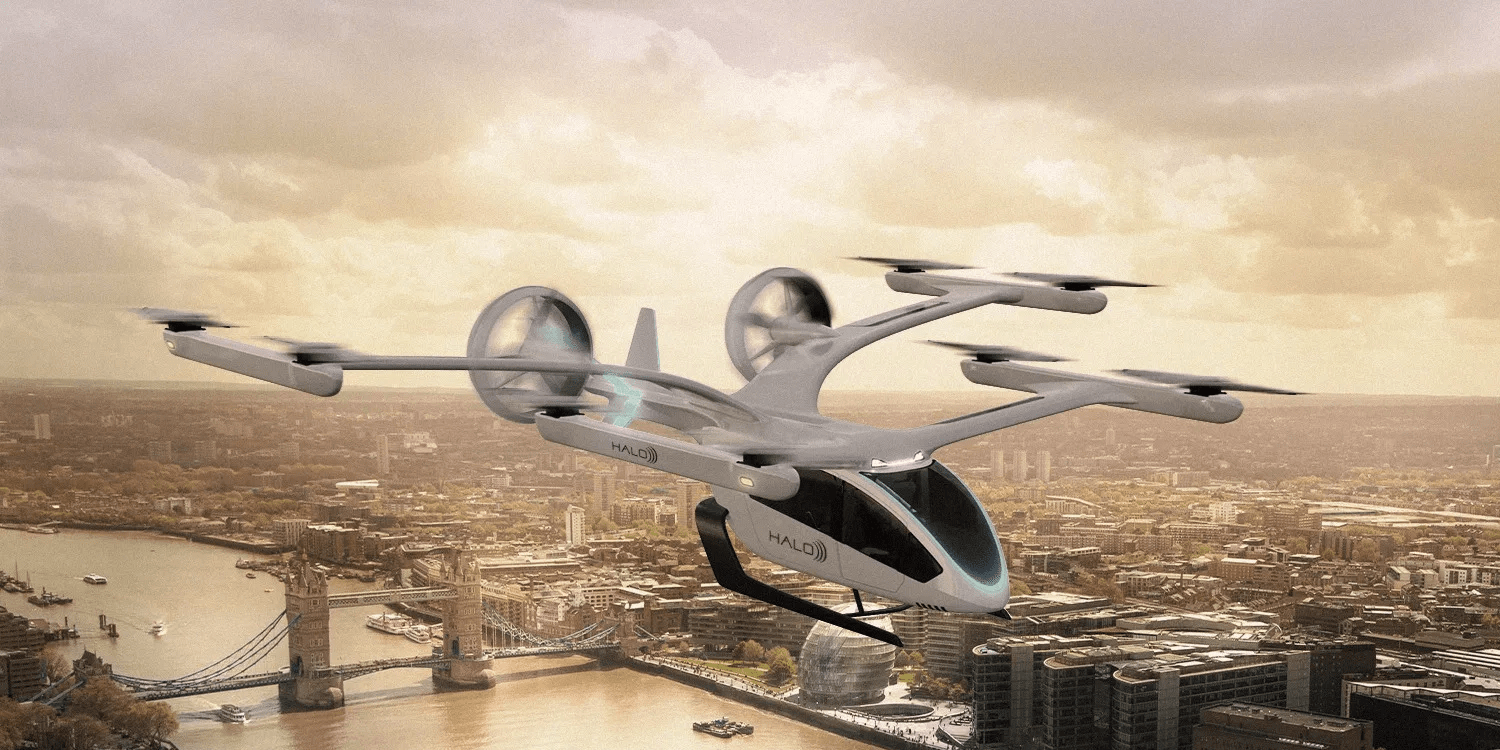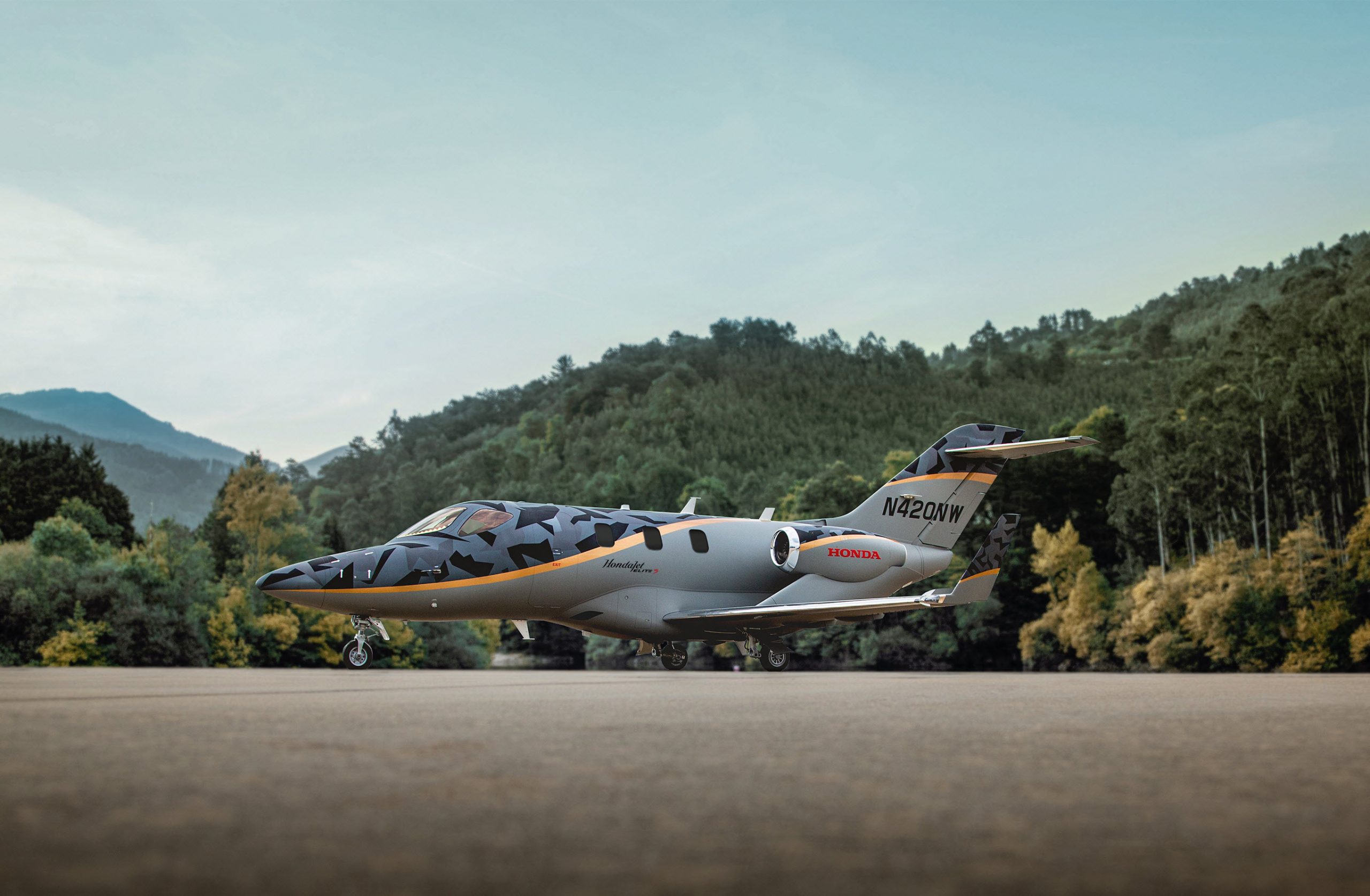Bombardier Global 8000 breaks the sound barrier in tests - Here's what we know
Prashant-prabhakar
25 May 2022

Can commercial planes go supersonic?
The Canadian plane manufacturer, Bombardier, has now confirmed the launch of its new business jet, the Global 8000. Touted to restore supersonic passenger flights nearly two decades after Concorde’s retirement, the news comes as a ray of hope for all the supersonic travel buffs.
The world's first supersonic commercial aircraft, the Concorde flew for the first time in 1976 although planes could go supersonic only over the ocean back then. This kept the potentially lucrative overland routes off-limits thereby severely restricting supersonic travel's business prospects.
Bombardier
Reportedly, the news comes after a Global 7500 test vehicle broke the sound barrier during a demonstration flight last May, achieving speeds of more than Mach 1.015. Consequently, the G7500, which was accompanied by a NASA F/A-18 chase plane, became the first Transport Category airplane to fly supersonic with sustainable aviation fuel (SAF)-according to Bombardier.
The Global 8000 aircraft leverages the outstanding attributes of the Global 7500 aircraft, providing our customers with a flagship aircraft of a new era Éric Martel, president and CEO of Bombardier, said in a statement made on Monday
Global 8000 | Bombardier
Tech and specs
Touted to be “the world’s fastest and longest-range purpose-built business jet”, the Global 8000 is projected to clock an unbeatable top speed of Mach 0.94—the fastest ever in business aviation.
Top speed0.94 MTake-off distance5760 ftLanding distance2237 ftMaximum operating altitude51,000 ftGE Passport Thrust18,920 lbf
Range
With an industry-leading range of 8,000 nautical miles, the Global 8000 business jet unlocks tens of thousands of popular city pair possibilities—including new ultra-long-range routes, such as Dubai to Houston, Singapore to Los Angeles and London to Perth, among many others.
STOL
Bombardier
The Global 8000 also delivers the longest range from even the shortest runways and in all weather conditions- all thanks to its innovative GE Passport engines and its revolutionary Smooth Fl?x Wing.
Source
The Smooth Flex-Wing is engineered like two wings in one: a high-lift wing for exceptional low-speed agility and a high-speed wing for unrivalled speed and range.
Representative | Bombardier
Cabin features
With a cabin altitude of 2,900 feet, the jet features the industry’s lowest cabin altitude to help feel more comfortable, especially on long-distance flights.
The Nuage seat is the first new seat architecture in 30 years with the industry’s first zero-gravity seating position designed for physical wellbeing and effortless comfort.
Bombardier
Bombardier’s Soleil lighting system is aviation’s first circadian rhythm-based cabin lighting fully integrated into the Flight Management System with a revolutionary Dynamic Daylight Simulation feature to help combat jet lag.
Bombardier
The cutting-edge nice Touch cabin management system is designed exclusively for the Global 8000 aircraft. Elegant and intuitive, the nice Touch system’s unique OLED touch dial control allows you to adjust a host of cabin settings quickly and comfortably.
Bombardier
Its been almost two decades since the Concorde was retired and the Global 8000 is one of the many projects ongoing in the industry aimed at increasing the speed of commercial aircraft.
According to Bombardier, the Global 8000 is scheduled to enter service in 2025.
https://www.youtube.com/watch?v=R5ANek3BinU&t=3s
SOURCE(s)
COVER: FlightGlobal
Read next
The world's first vertiport to be powered by Osprey - UK's leading charge point operators. Here's what we know
Prashant-prabhakar
24 May 2022

The road to providing a net zero-emissions infrastructure might be long but we are getting there. Urban Air Port (UAP) has been conducting a concept show in Coventry, UK of "Air One"- touted to be the world's first vertiport and as the highly successful event draws to a close, has chosen Osprey as one of its preferred partners to provide the charging for non-aeronautical vehicles at its vertiport sites.
Air One | Proactive Investors
Osprey, one of the UK’s leading charge point operators, will help facilitate a seamless, intermodal, zero-emission journey.
The event that spanned three weeks, saw Osprey providing several stations as a means ofdemonstrating on-site ‘charging as a service’. This will form a key part of UAP’s non-aeronautical revenue in the months ahead, which will be delivered through its digital platform and customer offering,‘Urban-Air Choice’ and the accompanying app.
To accomplish this, Osprey uses the latest technology to provide easy-to-use, accessible, rapid chargers, powered by electricity generated from 100% renewable sources. Furthermore, the chargers accept contactless and app payments and will be integrated into Urban-Air Choice on the UAP app.
Illustrative | Smart Home Charge
Our goal is to provide agnostic ground infrastructure for EVTOL cargo and passenger air taxis, including ground transport, as demonstrated at Air One – A seamless, zero-emission, intermodal journey is now possible. We’re delighted to have Osprey join our Advanced Air Mobility ecosystem, the world’s strongest and most sustainable. We look forward to building holistic, viable and sustainable infrastructure solutions that can help us all achieve our net zero goalsRicky Sandhu, Founder & Executive Chairman at Urban-Air Port Ltd said
Ricky Sandhu | The Primrose Hill Magazine
The right Infrastructure, as is with anything, plays a huge role in the success of any industry. The two companies share a like-minded vision and aim to remove the main barrier to the success of the EV industry – infrastructure.
Representative | Auto Futures
We’re delighted to be partnering with Urban-Air Port to provide safe, reliable and accessible charging at its future sites. The eVTOL space is hugely exciting and is becoming increasingly relevant as the world looks to reduce its emissions in all forms of transport. From those electrifying the vehicles on our roads to our skies, we love collaborating with innovators in the EV world, and we look forward continuing to work with Urban-Air Port on its future exciting projectsIan Johnston, CEO of Osprey Charging said
Representative | Agencia Infra
Although now in its infancy, UAP aims to deploy its multi-modal hub on a mass scale, creating a network of connectivity, while Osprey is building one of the UK’s largest vehicle charging infrastructure networks.
Furthermore, UAP also has plans of deploying Osprey’s innovative charging technology at several future sites throughout the UK.
SOURCE(s)
COVER: Industry Europe
Read next
The Honda Aircraft Company makes its presence at the European Business Aviation Conference and Exhibition (EBACE) 2022 held in Geneva and can be approached at Booth N61, Static AD9. The company will be showcasing recent developments such as the introductions of the updated HondaJet Elite S, HondaJet 2600 concept jet, and another annual crowning as the most delivered aircraft in its class.
Produced by the Honda Aircraft Company of Greensboro, North Carolina, United States-the Honda HA-420 HondaJet is a light business jet that made its maiden flight on December 3, 2003, and received its FAA type certificate in December 2015.
Aerospace Technology
Apparently, Honda managed to deliver 37 of its distinctive over-the-wing-engine-mount-configured HondaJet HA420s last year- the most in the very light jet category for the fifth consecutive year.
Additionally, the company delivered its 200th HondaJet in December-surpassing 100,000 fleet flight hours in January and receiving type certification last year from Thailand - the 14th country to approve the HA420. The company's sales and services spread over a wide geographic expanse including Europe, North America, Latin America, Southeast Asia, China, the Middle East, India, Japan, and Russia.
Introducing the HondaJet Elite S
Aerospace Technology
Tech and specs
Touted to be the world’s most advanced light jet as the farthest, highest, and fastest flying aircraft in its class, the Elite S's expanded operational capability allows an extended MTOW of 200 lbs.
Features a seamless human-machine interface intended to replace traditional voice commands with text-based messaging for departure clearance and en-route services were available in the United States.
The "COM3" functionality allows the operator to disable the Datalink Mode of the radio and use it as a traditional 3rd VHF (comes with a selection of FAA Data Comm, ACARS, or CPDLC).
Representative | Aerospace Technology
The HondaJet Elite S has a range of 1437 nautical miles, making it the farthest-flying aircraft in its class. This is made possible by the Elite S's refined aerodynamics and increased fuel capacity, which maximizes range for longer trips.
The Over-The-Wing Engine Mount configuration creates a natural sound barrier, making for a more tranquil flight while significantly reducing ground-detected noise.
The HondaJet Elite S carbon composite fuselage is both stronger and lighter than the aluminium used by other aircraft in its class, letting it fly higher and faster while using less fuel.
Featuring greater automation to enhance operational safety, the Under-Speed Protection system available during both autopilot and manual flight prevent a stall condition by automatically adjusting aircraft pitch until a safe airspeed is restored.
In the event of a missed approach, Go-Around mode can be activated at the push of a button to lessen pilot workload as they prepare for the next flight phase.
The HondaJet Elite S features the largest cabin in class, with a fully-private lavatory and smartphone-controlled cabin environment.
Paramount Business Jets
The aircraft offers unmatched efficiency, keeping in line with the company's commitment to preserving the environment.
Maximum Cruise Speed at FL300422 KTAS (782 km/h)Maximum Cruise AltitudeFL430NBAA IFR Range (4 occupants)1437 nm (2661 km)Engine ManufacturerGE Honda / HF120Engine Output (Uninstalled Thrust)2050 lbf each derated from 2095 lbf eachBypass Ratio2.9Wing Span39.76 ft (12.12 m)Height14.90 ft (4.54 m)Length42.62 ft (12.99 m)Typical Configuration1 crew + 6 pax / 2 crew + 5 paxAlternative Configuration1 crew + 7 pax / 2 crew + 6 paxHondaJet
Introduced last May at the company’s first virtual product launch, the HondaJet Elite S features a full-service galley, private lavatory with an optional belted seat, and an industry-first Bongiovi sound system. Furthermore, the flight deck includes a customized Garmin G3000 avionics suite and FAA DataComm and ACARS have been added to replace traditional voice commands with text-based messaging.
Representative | Aviation Week
Taking HondaJet’s signature exterior profile to the next level, the Elite S livery introduces three new colour options and logos.
Representative | Reddit
Hideto Yamasaki, who is the new president and director, takes over after former president-Michimasa Fujino retired on March 31. Fujino led the design and development of the HondaJet and the launch of Honda Aircraft as a new business jet manufacturer and Yamasaki is carrying on that legacy moving forward.
https://www.youtube.com/watch?v=yFPOEYdu2lA
SOURCE(s)
COVER: Hondajet
Read next
The race is on to get the Airbus "RACER" up and flying soon - Here's what we know
Prashant-prabhakar
22 May 2022

The manufacture of the Airbus "RACER" high-speed compound aircraft is rapidly gaining momentum at the manufacturer’s facility in Marignane, France, with the company planning for its maiden flight, possibly by the end of this year.
Airbus Helicopters Rapid and Cost-Efficient Rotorcraft (RACER)
Developed in the frame of the European Research Clean Sky 2 project involving 40 partners in 13 European countries, the Racer demonstrator was unveiled at the Paris Air Show in 2017. Two years later, it passed its critical design review and achieved significant manufacturing leads by 2020.
Airbus
All the major components from the 40 partners have arrived for the final assembly of the aircraft in Marignane, while the main gearbox will be delivered by the Italian manufacturer-Avio Aero, in June.
The first assembly phase took place at Airbus Helicopters' site in Donauwörth, Germany, which involved the installation of several major components such as the canopy, the box wings, the fuel system, and the cowlings, and more.
Design | Tech | Specs
heliopsmag
The high-speed demonstrator is touted to be optimised for a cruise speed of more than 400 km/h (the average helicopter can reach a top speed of about 260 km/h) and aims at achieving the best trade-off between speed, cost-efficiency and mission performance. Powered by two Aneto-1X engines, one of which can be shut down while in cruise flight, the aircraft will register significant fuel savings, thanks to the innovative Safran eco-mode hybrid-electrical system.
The Aneto-1X engines are touted to provide 25% more power than similar-size engines.
The aircraft’s asymmetrical tailboom also helps to generate a lateral force, requiring less power from the propellers in hover flight.
Airbus
Weighing in at nearly 7-8 tonnes, the Racer is designed to cruise nearly twice as fast as a conventional helicopter and with a target range of 400 nm.
The central fuselage
Airbus
Designed and manufactured by Romania’s RoRCraft consortium and the aerospace company ROMAERO, the Racer lightweight airframe is a major achievement for the teams as this is the first time such an advanced hybrid helicopter structure, incorporating both metallic and composite primary structural elements, has been produced in Romania.
The side shells
RACER side shells | Airbus
The Racer’s shell components, made of carbon fibre reinforced plastic (CFRP), have been manufactured in a highly automated process by a research team from the Fraunhofer Institute for Foundry, Composite and Processing Technology IGCV in Germany.
The wings
Illustrative | verticalmag
Optimised for aerodynamic efficiency, the patented “double wing” or “box wing” provides lift in cruise mode while enhancing safety around the demonstrator during ground operations
The landing gear
Airbus
Integrated inside the wing and fuselage with a movable-door system, the landing gear was conceived to minimize drag when retracted. When extended, the system will provide a large track for a safe landing.
Furthermore, the aircraft also features an “eco mode"- which Safran states, can reportedly result in a 15% reduction in fuel burn-when one of the two engines is placed in standby mode during cruise flight.
Reportedly, Airbus’ patented ‘Blue Edge’ rotor technology, together with the company's experience with advanced blade technology will help to reduce the noise footprint of the aircraft.
We are moving towards a first flight for the demonstrator in the second half of 2022, more towards the end of the yearBrice Makinadjian-the company’s chief engineer for the program, told AIN during a media briefing in Marignane, France, ahead of Heli-Expo 2022
According to him, the concept is scalable and is also fully applicable to military missions, but that apparently, falls outside the scope of the Clean Sky 2 initiative, which focuses purely on innovations in the civil sector.
SOURCE(s)
COVER: Source
Read next
India is investigating three separate incidents in the past two months where airline pilots had to shut down plane engines mid-flight made by CFM - a joint venture of General Electric Co. and France’s Safran SA, according to people familiar with the matter.
The so-called commanded in-flight shutdowns -- when pilots intentionally turn off one of the two engines after encountering problems -- may have stemmed from different issues. Modern commercial jetliners are equipped to fly and land safely with a single-engine.
The incidents involved two Airbus SE A320neo jets, operated by Air India Ltd.
All three incidents, the people said, involved engines made by CFM International Inc., the GE-Safran joint venture. All the planes landed safely.
The incidents involved two Airbus SE A320neo jets, operated by Air India Ltd., and a Boeing Co. 737 Max aircraft, operated by Indian carrier SpiceJet Ltd.
ALSO READ – Spicejet mid-air turbulence – here’s what is known so far
India has seen several mid-flight shutdowns, and regulators have responded strongly in the past, once ordering IndiGo, the nation’s biggest airline, to ground some of its A320neo planes after engines manufactured by Pratt & Whitney experienced repeated glitches.
The incident also involves a Boeing Co. 737 Max aircraft, operated by Indian carrier SpiceJet Ltd.
The issues come as CFM -- which is the sole supplier of engines for Boeing’s 737 families of jets, and one of two suppliers for the A320neo -- prepares to supply engines for the next batch of planes at IndiGo, the world’s biggest customer for the best-selling Airbus plane.
Safran, which is working with GE on a new technology in which the engine’s blades operate without a traditional casing, is also considering setting up a repair facility in India after CFM won its biggest-ever order from IndiGo.
The recent issues may also raise warranty costs for CFM. The engine-maker said in a statement it’s engaging with authorities in India and clients to minimize operational disruptions.
Investigation launched against CFM after 3 in-flight engine shutdowns
“Safety is our priority, and we are working closely with our customers and the Directorate General of Civil Aviation,” it said. Representatives for Airbus and Boeing had no immediate comment. A spokesman for India’s civil aviation ministry, which oversees the DGCA, didn’t respond to a request for comment.
ALSO READ - A320neo aircraft of Air India makes an emergency landing in Mumbai after mid-air engine shut down
In one of the latest incidents, an Air India A320neo flying from Mumbai to Bengaluru on Thursday, May 19 was forced to return to its origin before reaching cruising altitude, Flightradar24.com showed. On May 3, a SpiceJet 737 Max returned to Chennai just minutes into a scheduled flight.
A representative for Air India said in an email that the carrier was looking into the issue, saying it “accords top priority to safety and our crew are well adept and trained at handling such a situation.”
ALSO READ – SpiceJet Boeing 737 MAX safely returns to Mumbai after a mid-air technical glitch
ALSO READ – DGCA investigates SpiceJet’s 737 Max’s recent emergency landing
A SpiceJet representative said its aircraft returned to Chennai after take-off “due to a technical issue” and that the aircraft landed safely.
(With Inputs from Bloomberg)
Read next
How close are we to implementing regulations for UAM vehicles? EASA shows the way ahead
Prashant-prabhakar
19 May 2022

The Urban Air Mobility (UAM) market, characterized by vehicle type, application, and geography, is an aviation term for on-demand and automated passenger or cargo-carrying air transportation services around cities and urban areas. Examples include existing and emerging technologies such as traditional helicopters, vertical-takeoff-and-landing aircraft (VTOL), electrically propelled vertical-takeoff-and-landing aircraft (eVTOL), and unmanned aerial vehicles (UAVs).
Representative| Aerospace Manufacturing and Design
How big is the UAM market and why is it significant?
According to the latest figures, the global urban air mobility market size was USD 2.90 billion in 2020. It is projected to grow from USD 3.01 billion in 2021 to USD 8.91 billion by 2028 at a CAGR of 16.77% in the 2021-2028 period.
The whole concept of Urban Air Mobility revolves around a safe and efficient aviation transportation system that will use highly automated aircraft that will operate and transport passengers or cargo at lower altitudes within urban and suburban areas.
Volocopter to fly its eVTOL at the 2024 Paris Olympics | TechCrunch
With so many eVTOL companies and their subsequent projects on the rise, and with many nearing completion, it is only imperative that we have a well-defined set of global standards that would regulate their operations.
Training UAM pilots - EASA leads the way
EASA believes there is currently a need for the airship and eVTOL industries to be able to train on FSTDs before such new aircraft enter service.
Illustrative | Fortune
In addition, new innovative FSTDs are being introduced that also include use of virtual/augmented reality (VR/AR) technologies. It should be noted that EASA has found that these innovations are also enabling better and more training in an FSTD, leading to an increasing level of safety, especially in the rotorcraft domainsays Jens Krüger, Senior Expert of Flight Crew Training FSTD at EASA
According to Kruger, "Special conditions" (SC) help expedite the current process to update the existing certification specifications for FSTD (CS-FSTD A/H) to consider both the new categories of aircraft using new technologies as well as new technologies for training devices.
Since SCs are aircraft-specific, only the aircraft manufacturers would know about the specific operation and the specific training needs, thereby the need of the hour is to work on an SC-FSTD document which would serve as a guideline and basis for upcoming FSTD evaluations for these aircraft categories.
Representative | Joby S4 eVTOL aircraft
The definition of specific training tasks necessary to operate the novel categories of aircraft and the definition of tests for the evaluation and qualification of associated training devices to cover those specific training tasks are two of the major tasks of the industry-led task force, respectively, of the individual OEMs. Another important point is to get flight test data or engineering data, following CS-SIMD operational suitability data to validate the FSTD in those areas and to be used for the evaluation and qualification of the training devices. This can only be done by the industry, not by EASASays Krüger
At the High-Level Conference on Drones conducted by EASA in March 2022, Christian Kucher-Senior Expert, Flight Crew Licencing, highlighted that pilots who fly the new eVTOL aircraft will initially be licenced through the current CS-FSTD A/H path, but with an additional type rating for the new vertical takeoff and landing aircraft.
A Notice of Proposed Amendment (NPA) is expected to be issued soon with a targeted implementation of 2024. This would be followed the next year by NPA #2 to define a new VTOL Pilot Licence (VPL), which would feature both a one-time basic practical training module and an aircraft-specific practical module (following ICAO CBTA guidelines) in effect a type-rating for each aircraft the pilot wishes to fly on a commercial basis (whether carrying passengers or cargo).
While the VPL scheme is expected to hit the floors by 2025, EASA will continue to collect relevant scientific data to validate the safe operation of the new urban air mobility airships.
Developments in the making
Efforts are on to define specifications when A/M/V/XR training technology will be used in FSTDs.
Illustrative | assemblymag
The work is using the existing CS-FSTD (A/H) as a basis where validation tests will be amended or partially replaced by SCs which are tailored to the aircraft type-specific requirements and to new FSTD technologies. Although the approach to use special conditions may be the same for new technologies for FSTD, like VR/AR, the development of conditions for those immersive solutions is not part of the airship eVTOL task force’s objectivessays Krüger
VR/AR/XR is a new feature used on FSTDs, which Kruger believes, has the potential to be integrated into FFSs in the future.
SOURCE(s)
COVER: Electrive



Comment